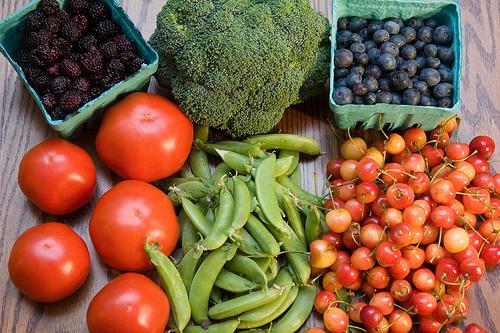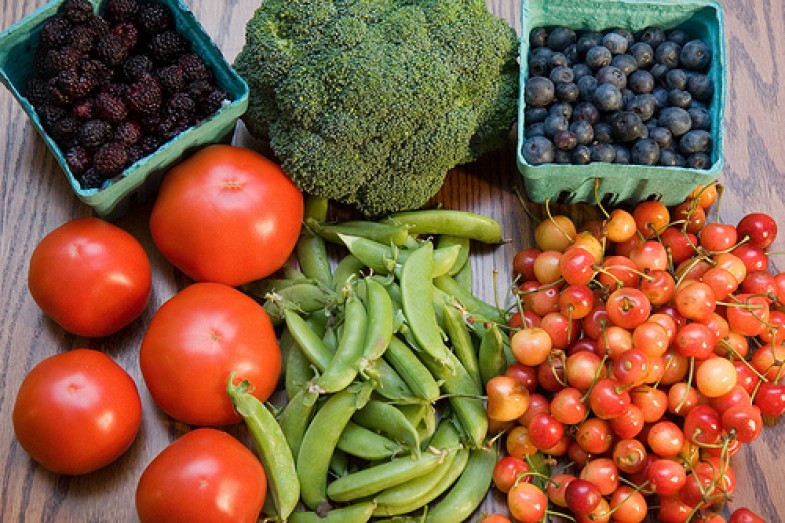This past decade has been a time of amazing growth for community-based agriculture. Farmers markets are trendy, books about the food system have become New York Times bestsellers, and ‘locavore’ is the Oxford word of the year. The Slow Food movement, the strength of the organics industry, and the cultural fascination with chefs and healthy eating are also indicators of a shift in the public’s perception about food and agriculture.
At the same time, the farm bill that passed Congress last spring—which will shape U.S. food and agricultural policy for some years to come— brought significant frustration for those promoting community-based food systems. Sure, there will be some new money and some new programs to support farm-based conservation practices and local foods business development, but these dollars pale in comparison to the funds that support ill-conceived agricultural commodity programs. Many of us thought that this was the year we would finally reinvent the farm bill to begin reversingthe folly of an agricultural system based on cheap commodity production. But the unprecedented coalition of farm, conservation, public health, and anti-hunger groups did not have the political clout to change the overall structure of U.S. farm policy.
 Photo by Wally Hartshorn, via Flickr, licensed under a Creative Commons Attribution, NonCommercial license.
Photo by Wally Hartshorn, via Flickr, licensed under a Creative Commons Attribution, NonCommercial license.
Three trends in agriculture are particularly disturbing for the future of agriculture. The first is how far we are from a truly safe and healthy food system, as rising obesity outbreaks and national outbreaks of e coli in spinach demonstrate. Second, the fertile soils and abundant water resources that allowed the U.S. to become a agricultural powerhouse continue to be depleted and contaminated. And third, the knowledge base of good farming practices is gradually disappearing as farms consolidate and the wisdom of the remaining farmers is lost to increasingly industrialized production. If anything, recent American agricultural policy has done more to exacerbate these trends rather than reverse them.
Part of the problem that policymakers have in crafting good policy is that understanding the complexity of these trends is difficult, even though creating new policies is easy. This results in the creation of many impressive-sounding programs, but the long-term trends continue unabated.
I’ve been intrigued by what makes particular policy initiatives successful or not. Why was the civil rights movement of the 1960s successful in so many ways, for example, or the anti-smoking initiatives of the 1980s and 1990s? On the other hand, why has the movement for national energy independence failed miserably since the issue gained prominence in the 1970s, despite the fact that it enjoys strong support from across the ideological spectrum?
Two overall themes seem to play a prominent role in determining the success of a movement – morality and money. When the moral legitimacy of bad policies becomes blatantly obvious to much of the public, change can happen quickly, as demonstrated by the civil rights movement. But on the other hand, if a policy change is deemed too expensive for the public or a particular industry, such as domestic energy independence, progress is stalled.
Food and agricultural policy seems to be caught between these two overall themes. A growing number of people morally object to how agricultural policy contributes to the decline of small farms, to the glut of unhealthy foods that policies help to proliferate in children’s diets and to the depletion of soil and water resources that are critical for the wellbeing of future generations. But enough interest groups are invested in the current state of doing things that it makes shifting agricultural funding very difficult. Policymakers have had some success adding new initiatives to agricultural policy, but not so much in changing the general direction of agriculture.
Could there be a better approach for success? I’ve been intrigued by applying the cap-and-dividend concept that On The Commons senior fellow Peter Barnes ) has developed for addressing climate change. In particular, the three initial principles he lays out for policy design may also have merit for agriculture:
1. The simpler a system is, the more likely it is to work.
2. The fairer a system is, the more likely it is to last.
3. In the future, polluters should pay for the right to pollute things that we all own together – the commons.
For the first principle, it’s doubtful that someone could imagine an agricultural policy as complicated as what we currently have, or an overall policy that is less effective in achieving its goals. Modern agricultural policy started during FDR’s Administration with a straightforward plan to maintain fair commodity prices by managing the boom and bust cycles that have devastated farmers for decades. But each recurring farm bill brought new ideas and new priorities. The past 20 years largely dismantled the policies that maintained fair prices, and turned U.S. farm programs into a complicated subsidy system that factors in base acreage, loan deficiency payment rates, countercyclical payment prices, target prices and more. And don’t even try to figure out the dairy program, which defies comprehension.
The second principle, fairness, does indeed seem to be the Achilles’ heel for U.S. agriculture. Farmers that grow fruits and vegetables are upset about the subsidies to corn, soybeans, wheat, cotton and rice. Small farmers are upset that the commodity programs have a bias toward large farms – the more bushels of corn you grow, the more government payments you receive. The organic industry and direct marketing farmers are bothered by the disadvantages that their crops face in federal crop insurance. Public health groups are concerned with the benefits for unhealthy, highly processed foods at the expense of whole foods. In total, just about everybody has their finger pointed at someone else.
The third principle Barnes articulated—that polluters should pay—runs contrary to most agricultural policy. Only the most egregious water quality violations by feedlot operators result in prosecution. Many of the most alarming conservation issues in agriculture, like the loss of soil resources, depletion of water supplies, and water pollution, are poorly monitored and in most cases managed only by incentive programs.
In terms of these three principles, agricultural policy fails miserably. It’s hard to find anyone who would say that U.S. agricultural policy works well, whether for farmers, consumers, or anyone between. And few would say that the problems with agricultural policy can be solved by adding a couple of new programs. And yet farm bill policy discussions are often confined to a narrow range of changes or additions. If farm bill “reformers” can’t get beyond the current ineffective structure of agricultural policy, how can we expect anything different from Washington policymakers?
At some point agricultural policy will be overhauled. It may happen because of pressure from international trading partners, or consumers’ demand for a more diverse and healthy food system, or farmers and rural communities that suffer through another farm crisis. But it is clear that the current structure is running on fumes, and some true visioning is needed. Using Peter Barnes’ thinking on climate change as a basis, here are some ideas for the future of agricultural policy.
• The federal government not only impacts the structure of agriculture through policy, but also through taxes. And too often these taxes are putting farmers that contribute the most to the commons at a disadvantage. The federal tax system has structural biases in it that favor very large and small hobby farms at the expense of the typical, family-sized farm, and also favors capital investment over labor.. These biases in tax policy make effective farm policy all the more difficult, and have contributed to the proliferation of large, industrial agriculture practices.
• The health of soil and water resources is perhaps the most crucial factor for a thriving U.S. agriculture in future decades, and yet there are minimal regulations, no taxes, and no caps on the depletion of these resources. It’s likely that many farmers are going to have to change their way of doing business in the near future because of environmental concerns, such as the depletion of the Ogallala Aquifer in the Great Plains, the growing “dead zone” in the Gulf of Mexico that is exacerbated by fertilizers used in the Mississippi River basin, or the loss of soil that often occurs on sloped ground when the only crops planted are annuals like corn and soybeans. Placing a cap on the consumption of these important resources would be a good starting point for agricultural policy.
• Next to maintaining the natural resource base for future agriculture, another crucial resource is the farmers. Federal agricultural policy tends to treat farmers as expendable because commodity programs pay by the bushel. This has contributed to the consolidation of farms. Consolidation of farms – and the fact that most of these farms are growing the same few crops – creates real vulnerabilities for U.S. agriculture. One bad pest or disease outbreak on these particular crop varieties could have a devastating impact on our food supply. Knowledgeable farmers that know how to grow a variety of crops and use a variety of production practices are a hedge against this type of catastrophe.
• The most important task for agricultural policy is to support a safe, healthy and abundant supply of food. The abundant part has gone well – we have plenty of calories available per person. The safe and healthy component has received mixed reviews, as e coli and salmonella outbreaks are commonplace, and diet-related diseases have reached epidemic proportions. Agricultural policy has played a role in the overconsumption of junk food in the U.S., as cheap corn and soybeans have proliferated and outcompeted other food products, resulting in a food system with excessive sugars (led by high fructose corn syrup) and unhealthy fats (led by soybean oil).
What’s interesting is that there is actually little debate about the ultimate goals of agriculture – a safe, healthy and abundant food system; sustaining natural resources; and maintaining a strong agricultural economy that keeps farming economically viable. Interest groups simply have differences in methods and priorities within these goals.
But what has become clear to me is that, given the current policy framework, we just can’t get there from here. Sure, we can add a new program that may improve things, and tweak the numbers to make distribution more equitable, but it isn’t enough. The ultimate goals of agriculture have been lost in the minutiae that a farmer deals with at the local Farms Services Agency office, or the school district administrator deals with within the school lunch commodity distribution programs, or a social worker deals with trying to obtain food support for a client.
Agricultural legislation has the challenge that old programs don’t often go away, they usually get tweaked every farm bill until they become a complex and inscrutable blend of policy priorities. In the midst of concerns with the rising cost of foods over the past year, the alarming diet-related public health concerns, and the extreme swings in commodity prices and agricultural profitability, it’s an ideal time to assess priorities. Let’s make sure that policies help to strengthen the agricultural economy, the natural resources, and the health of all of us.
Mark Muller, an environmental engineer by training and an On the Commons Fellow, has worked for more than a decade on agricultural policy for the Institute for Agriculture and Trade Policy. He has recently returned to the U.S. after volunteering in Honduras for several months, and has recently become IATP’s director of the Food and Society Policy Fellowship Program.


